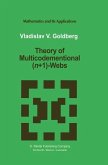High Quality Content by WIKIPEDIA articles! The series 1/4 + 1/16 + 1/64 + 1/256 + · · · lends itself to some particularly simple visual demonstrations because a square and a triangle both divide into four similar pieces, each of which contains 1/4 the area of the original. In the figure on the left, if the large square is taken to have area 1, then the largest black square has area (1/2)(1/2) = 1/4. Likewise, the second largest black square has area 1/16, and the third largest black square has area 1/64. The area taken up by all of the black squares together is therefore 1/4 + 1/16 + 1/64 + · · ·, and this is also the area taken up by the gray squares and the white squares. Since these three areas cover the unit square, the figure demonstrates that.
Bitte wählen Sie Ihr Anliegen aus.
Rechnungen
Retourenschein anfordern
Bestellstatus
Storno








